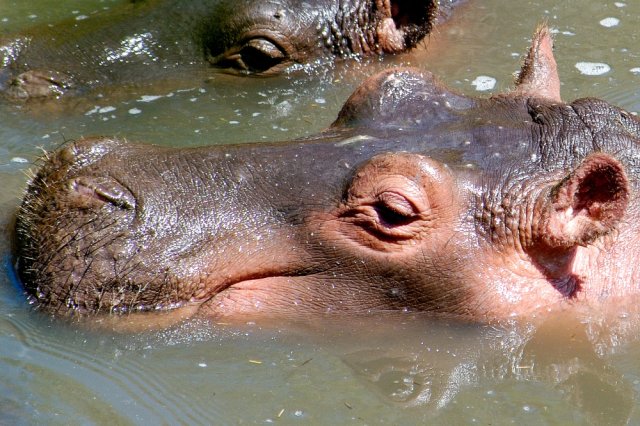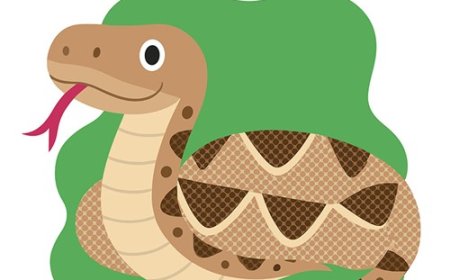Hippopotamus Facts for Kids – Fun Guide to Hippos, Habitat, Diet & Behavior
Discover fascinating hippopotamus facts for kids! Learn about hippos’ size, diet, habitat, behavior, and why they’re called “river horses.” Explore fun facts and quizzes.

Hippopotamus
Common Name: Hippopotamus (or “hippo”)
Scientific Name: Hippopotamus amphibius
Distinctive Feature: Large, barrel-shaped body with huge mouth and semi-aquatic lifestyle
Introduction
The hippopotamus, often called just “hippo,” is one of the largest land mammals on Earth—second only to the elephant in weight. The name hippopotamus comes from Greek and means “river horse,” which is fitting because hippos spend much of their lives in rivers, lakes, and swamps.
Despite their round, chubby look and mostly calm nature during the day, hippos are extremely strong, territorial, and fast—both in water and on land. They are famous for their giant mouths, huge teeth, and loud, honking grunts that echo across African wetlands.
Physical Description
Hippos are truly enormous animals. Adults can weigh between 1,400 to 4,500 kg (3,000 to 10,000 pounds)! Their bodies are shaped like barrels, with thick skin and short, stubby legs. Even though they look slow, hippos can run surprisingly fast—up to 30 km/h (19 mph) on land.
Key Features
- Color: Grayish-brown skin with a pinkish tint around their eyes and ears
- Skin: Very thick, almost hairless, and secretes a red, sticky substance sometimes called “blood sweat” (it’s not really blood) that protects their skin from the sun
- Eyes, ears, and nostrils: Sit high on their heads so they can see and breathe while mostly underwater
- Mouths: Can open over 150 degrees wide, with large tusk-like teeth used for defense
- Tail: Short and used to flick dung for marking territory
Habitat and Distribution
Hippos live in sub-Saharan Africa, near rivers, lakes, and swamps where the water is shallow enough to stand and deep enough to submerge. They prefer slow-moving freshwater and are rarely far from water sources.
Habitat Facts
- Semi-aquatic: Spend most of the day in water to stay cool
- Terrestrial grazers: Come out at night to graze on land
- Range: Found in countries such as Uganda, Kenya, Tanzania, Zambia, and South Africa
They create channels and paths in wetlands and help keep aquatic ecosystems healthy.
Diet and Feeding Behavior
Hippos are herbivores. Even though they have huge, scary teeth, they only eat plants, mostly grasses.
Feeding Behavior
- Hippos graze at night, traveling several kilometers to feed
- They use their wide mouths to pluck grass rather than chew
- Eat around 40 kg (88 lbs) of grass each night
- They do not eat while in water
- Their digestion is slow, and they often rest for long periods to process food
Though they have giant canines, they don’t use them for chewing—those teeth are for fighting.
Reproduction and Lifecycle
Hippos mate and give birth in water. Mating can be rough, and only dominant males have the right to breed with females in their territory.
Lifecycle
- Mating season: Usually during the dry season
- Gestation: About 8 months
- Birth: Usually one calf, born underwater
- Calf size: 25–50 kg (55–110 lbs) at birth
- Nursing: Calves nurse underwater or while resting on their mother’s back
- Independence: Calves stay close to their mothers for several years
Females can give birth every 2–3 years. Hippos live up to 40–50 years in the wild and longer in captivity.
Behavior and Social Structure
Hippos are very social animals, usually living in groups called pods, bloats, or herds of 10 to 30 individuals.
Social Facts
- Pods are led by dominant males
- Males defend their territory with loud calls, yawning displays, and fights
- Females and young form the core of the group, while bachelor males stay on the edges
- Hippos are nocturnal grazers
- They communicate through grunts, bellows, snorts, and underwater “songs”
Despite their funny waddling and sleepy daytime habits, hippos can be aggressive if they feel threatened.
Conservation Status
The hippopotamus is listed as Vulnerable by the IUCN Red List. Their population is decreasing due to:
- Habitat loss (wetlands being drained or developed)
- Conflict with humans (crop raiding or threatening fishermen)
- Illegal hunting for meat and ivory-like teeth
Today, there are fewer than 130,000 hippos in the wild. Conservation efforts include protected reserves, anti-poaching laws, and education programs.
Cultural Significance
Hippos have fascinated humans for thousands of years. In ancient Egypt, the goddess Taweret was shown with the body of a pregnant hippo. Today, hippos appear in children’s books, cartoons, and games like Hungry Hungry Hippos.
They’re often seen as cute and clumsy—but in real life, hippos are powerful and dangerous, and are among the deadliest animals in Africa.
Vocabulary List
| Word | Definition |
|---|---|
| Semi-aquatic | Living partly on land and partly in water. |
| Territorial | Protecting an area that an animal considers its own. |
| Herbivore | An animal that eats only plants. |
| Gestation | The period when a baby grows inside its mother before birth. |
| Dominant | The most powerful animal in a group. |
| Pod | A group of hippos living together. |
| Sub-Saharan | The region of Africa located south of the Sahara Desert. |
| Vulnerable | At risk of becoming endangered. |
| Graze | To feed on grass. |
| Ivory | Hard white material from the tusks and teeth of animals. |
Interesting Facts
- 🦛 Hippos can’t swim! They move by bouncing off the bottom and walking underwater.
- 😲 A hippo’s mouth can open up to 4 feet wide!
- 💦 They can hold their breath for 5–7 minutes.
- 🔊 Hippos are the loudest land mammals.
- 🩸 Their skin secretes a natural sunscreen.
- 🚽 They flick poop with their tails to mark territory.
References
- IUCN Red List
- African Wildlife Foundation
- National Geographic Kids
- Encyclopedia of Life
- BBC Earth, “Hippos: Africa’s River Giants”




















































